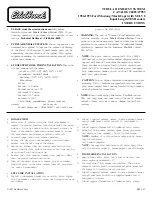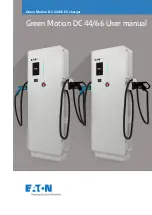
20
Driving the Vehicle
Once the engine is warm, the vehicle is
ready to be driven.
1. With the engine idling, press the foot
brake pedal to apply the brake; then
select the appropriate operating range
and/or direction with the shift lever.
2. Release the foot brake pedal and
press the accelerator to slowly add
power to start moving.
3. To slow down or stop, release the
accelerator and press the foot brake
pedal as necessary to slow or stop the
vehicle.
Braking/Stopping
Always allow plenty of room and time to
stop smoothly. Sometimes quick stops
are inevitable, so always be prepared.
Whether you’re stopping slowly or stop-
ping quickly, do this:
1. Release the accelerator; then press the
foot brake pedal to apply the brake.
2. If the wheels lock, release them for a
second; then apply them again. On
surfaces such as ice, mud, or loose
gravel, pump the brake pedal rapidly.
3. Never “ride” the brake. Even main-
taining minimal pressure on the brake
pedal will cause the brake pads to
drag on the disc and may overheat the
brake fluid.
Parking
Parking involves following the previous
rules for braking; then:
1. After the vehicle stops, shift into
park.
2. Turn off the ignition.
3. If you have to park on a hill, block the
wheels on the downhill side.
Basic Turns
Steering effort is at its lowest in two-wheel
drive (2WD). Greater effort is needed
when in four-wheel drive (4WD). The
greatest effort is needed when in four-
wheel drive and the differential (if
equipped) is locked.
Slow down before entering a turn. The
basic turning technique is to drive at low
speed and gradually adjust the amount of
steering to suit the driving surface. Do
not make sudden sharp turns on any sur-
face. Refer to the sub-sections Driving
Uphill, Driving Downhill, Crossing
Obstacles, Driving in Reverse, Skidding
or Sliding, Crossing Water, or Crossing
Roads for more information.
If your vehicle ever skids sideways during
a turn, steer in the direction of the skid.
Also, avoid hard braking or accelerating
until you have regained directional control.
Driving Uphill
Always drive straight up the hill and
always avoid hills steeper than 15°.
1. Keep both hands on the wheel.
! WARNING
Excessive repetitive use of the
hydraulic brake for high speed stops
will cause overheating of the brake
fluid and premature brake pad wear
which will result in an unexpected
loss of brakes.
! WARNING
Use only Arctic Cat approved brake
fluid. Never substitute or mix differ-
ent types or grades of brake fluid.
Brake loss can result. Check brake
fluid level and pad wear before each
use. Brake loss can result in serious
injury or death.
! WARNING
Use care in turns - turning the steer-
ing wheel too far or too fast can result
in loss of control or a rollover. Exces-
sive speed, driving aggressively, or
making abrupt maneuvers, even on
flat, open areas, can cause loss of
control, tipping, or rollover. Uneven
terrain, rough terrain, soft surfaces,
slippery surfaces, and paved sur-
faces can also cause a loss of control
or rollover in a turn. On loose or soft
surfaces, allow yourself more time
and distance to turn and slow down.
Содержание HDX
Страница 1: ...2016 OPERATOR MANUAL Prowler HDX www arcticcat com...
Страница 58: ...56 Maintenance Record DATE MILEAGE SERVICE PERFORMED NOTES...
Страница 62: ...60 NOTES...
















































